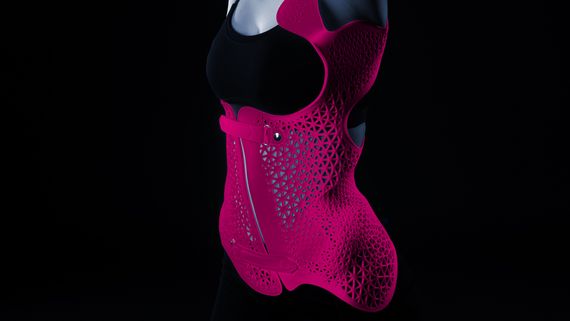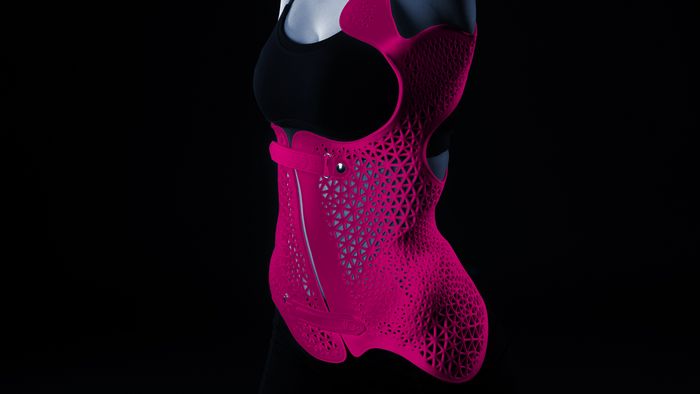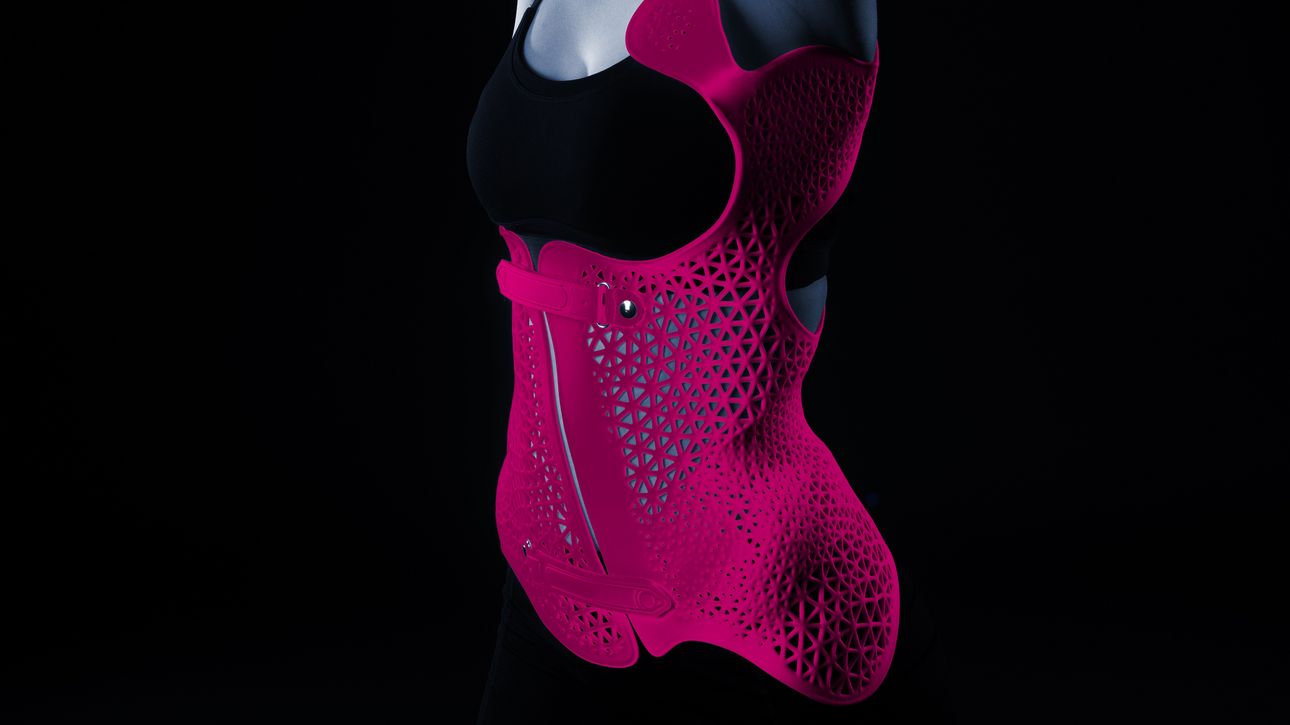Idiopathic scoliosis treatment with tailored AM-produced corset sets. This therapy method aims at correcting the curvature of the spine and stabilizing the spine in its new form. Whatever the means, the patient's well-being is always first and foremost.
Custom AM-produced corsets



What is idiopathic scoliosis?
Scoliosis is a lateral distortion of the spine that causes twisting of individual vertebrae. Idiopathic scoliosis primarily arises during pronounced growth phases of the spine, and so it is typically classified as a growth deformity: Idiopathic scoliosis is a direct result of the vertebral bodies growing slower in one direction than another. This misgrowth in one or multiple vertebrae causes their rotation (or torsion), which in turn causes a twist (or contortion) of the entire vertebral column. As a result, the spine bends laterally to the right (right convex scoliosis) or to the left (left convex scoliosis).
Why is this kind of treatment necessary?
Scoliosis can affect vital functions, including respiration and the work of the internal organs and the heart, and can also cause severe pain. There are two ways to treat scoliosis. One focuses on the operating variant, the other involving conservative treatment methods based on a corset brace and physiotherapy. Corset treatment can be an effective and satisfying approach with strong healing potential, especially when spinal deformation is detected early. The corset method of treatment is becoming increasingly prevalent for children and adolescents.
Conventional production of a corset
Before now, a 3D body scan of the patient was created. The ensuing 3D data is then used to create a patient-specific corset shape (the positive). The body is then milled and thermoformed using PP (polypropylene).
Optimized process through additive manufacturing
Additive manufacturing can eliminate and modified a number of production work steps (milling and thermoforming). The process consists of:
- customer discussion, assessment of the attitudes, etc.
- on-site 3D body scan, including photos
- model of the scoliosis using x-ray imaging
- 3D modeling of the corset and corrections using special software
- production of corset via additive production (selective laser sintering in polyamid12)
- application of closures, etc.
- handover of corset to the patient and fitting
The improved process flow through to the finished corset uses features such as 3D printing to add significant value. These include:
- better patient compliance
- improved tailoring of corset geometry to patient
- lighter and more pleasant material – good comfort
- material properties of polyamide 12 optimal for the patient - elastic yet form-fitted • higher quality level
- mesh for active breathability
- modern design and increased patient acceptance
- timely delivery
Wear a corset for better back health.



